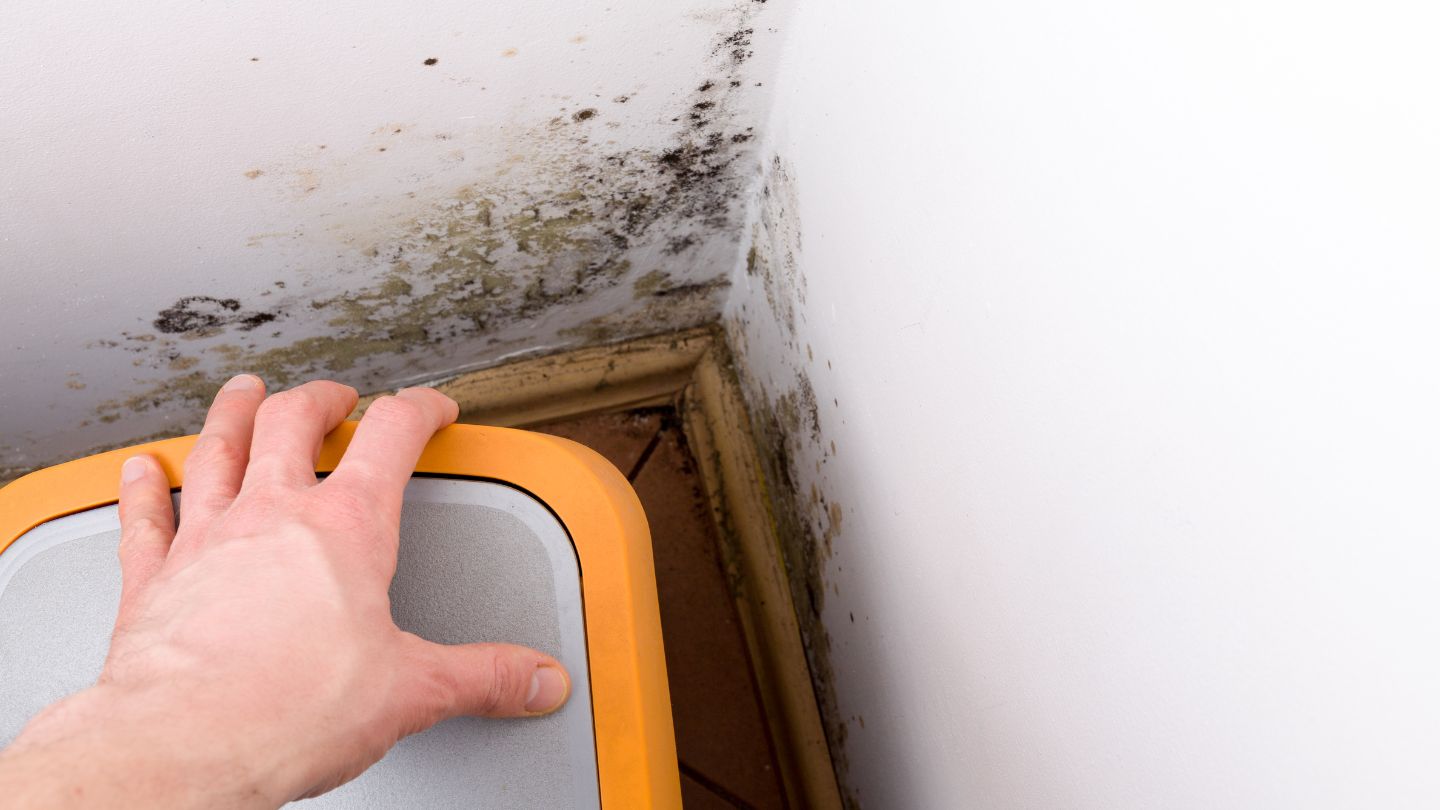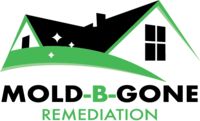When arranging a professional mold inspection, asking the right questions is crucial. This blog covers the top questions to ask during a professional mold inspection and why they matter. You’ll understand how to protect your health, ensure a comprehensive inspection, and guarantee effective mold mitigation.
Key Takeaways
- Professional mold inspections are vital for identifying health hazards and eliminating hidden mold, especially after water damage or before renovations.
- Certified and experienced mold inspectors ensure effective mold management and risk mitigation, with protocols for accurate testing and safe remediation practices.
- Mold-B-Gone distinguishes itself with a 100% clean rate, transparency in operations, and commitment to customer satisfaction, making it a reliable choice for mold remediation.
Why Is a Professional Mold Inspection Necessary?
Mold extends beyond being a mere visual blemish. It poses significant health risks, potentially leading to respiratory difficulties, allergic reactions, and other grave health concerns. Expert mold inspections reveal concealed black mold and pinpoint the sources of moisture that can compromise indoor air quality. Prompt intervention is essential when mold is detected to safeguard your living space from potential mold infestations and ensure overall well-being.
Accredited professional mold inspectors leverage their specialized knowledge in dealing with various types of molds to protect the safety and wellness of your household. Their expertise as seasoned inspectors empowers them to adeptly manage any issues related to mold growth within residential environments.
Read more: Keeping a Healthy Home Environment: The Importance of Regular Mold Inspections
When should a mold inspection be conducted?
After conducting a water damage assessment, it is imperative to prioritize mold inspections to detect any concealed mold growth. Before embarking on significant renovations, especially when there is a known history of water damage, such inspections are crucial.
Ensuring that there isn’t any hidden mold that could impact your health and investment is vital during the acquisition of new property. Thus, a thorough mold inspection should be included. Routine home inspections, along with regular checks, are essential for preserving both the safety and well-being of your residence and those residing within it.
What are the risks of not addressing mold growth?
Neglecting the presence of mold can lead to significant health issues, especially among those at heightened risk, including older adults and young children. Exposure to mold commonly triggers a range of health problems such as respiratory difficulties, skin irritation, allergic reactions, and tiredness.
Failing to address untreated mold can also inflict considerable damage on properties. It’s worth noting that not every homeowner’s insurance policy provides coverage for issues linked to mold. Taking quick action against mold problems and consistently examining areas susceptible to moisture are critical steps in averting serious health and economic impacts.
Read more: Can Opening Windows Help Mitigate Mold Growth?
Certification and Experience of Mold Inspectors

For mold inspections, the expertise and credentials of the inspector are essential. Certifications from esteemed bodies such as the Institute of Inspection, Cleaning, and Restoration Certification (IICRC) endorse a mold inspector’s proficiency and skill level.
To ensure that you engage a competent expert for mold inspection, it is crucial to distinguish between basic training certificates and accredited certifications.
Are the mold inspectors certified and trained?
It is crucial for inspectors to possess certifications from reputable programs, as it confirms they are equipped with the required skills and expertise. Certifications such as WRT, AMRT, PMII, and ACAC confirm that inspectors have a comprehensive understanding of issues related to mold. Mold-B-Gone Remediation employs staff who hold these professional certifications, showcasing their dedication to excellence and proficiency in the field.
Ensuring that an inspector has valid certifications is essential for entrusting them with effectively managing the inspection. This step helps reduce the risks associated with mold by employing qualified professionals who can guarantee both safety and meticulousness throughout the entire process of mold removal.
How long have you been in the mold remediation industry?
Having extensive experience in mold remediation is imperative. Contractors with a prolonged presence in the field possess greater knowledge and skill in pinpointing and addressing issues related to mold. Professionals who have honed their craft over time are more adept at navigating intricate challenges, thereby guaranteeing the successful removal of mold while safeguarding your property. Involving professional help can also augment the efficiency of the remediation process.
It’s essential for effective detection and treatment of mold problems that companies involved have significant experience in the area of mold remediation. Firms such as Mold-B-Gone bring years of expertise to the table, ensuring that any concerns you have with mold will be resolved proficiently and with a high degree of professionalism.
Mold Testing Procedures
Testing for mold is crucial to detect and measure the presence of mold spores, which informs the appropriate remediation measures required. By employing a range of testing techniques, one can identify mold spores within indoor settings and gather information that aids in creating successful strategies for mold remediation.
What types of mold tests will be performed?
Mold spore concentrations in the environment are measured through air sampling, which utilizes specialized tools to capture airborne spores. This process helps determine the level of mold in the air and confirms that indoor air quality remains healthy. Both single and multiple air samples can yield essential information for assessing these factors.
Tape lift tests employ sticky tape to collect samples from surfaces, allowing for the identification of various types of mold. This technique instantly verifies whether there is mold growth on any surface by showing visible signs of contamination.
When conducting bulk sampling, materials suspected of harboring mold are gathered for thorough laboratory examinations. Swab testing involves using a sterile swab to pick up samples from surfaces. These specimens are then evaluated for any presence of mold. Data derived from both approaches significantly contributes to creating precise plans aimed at remediation efforts.
Read more: 7 Types of Mold You Might Encounter in Your House
How do you ensure accurate mold test results?
It is essential to have precise results from mold tests to successfully carry out remediation efforts. By adhering to uniform sampling and testing methods, one can reduce variations and secure dependable and consistent outcomes.
Employing reputable laboratories guarantees the precision and trustworthiness of the test results for mold, which aids in making well-informed choices regarding strategies for remediation and efficiently tackles issues related to mold.
Read more: How to Test for Mold in Your Home
Identifying Moisture Sources
It is essential to pinpoint the origins of moisture in order to halt mold proliferation. Since mold requires organic substances and dampness to flourish, tackling issues related to moisture is imperative for its successful prevention.
We will delve into the methods used by inspectors when identifying sources of moisture, as well as highlight which regions within a residence are most susceptible to encountering problems with moisture.
How do you identify current moisture issues in the property?
Inspectors employ instruments such as hygrometers and moisture meters to measure humidity levels, which can reveal concealed moisture issues. By combining these tools with thermal imaging during a visual inspection, inspectors are able to identify current moisture challenges, thus aiding in the prevention of mold growth and averting possible health dangers.
Utilizing sophisticated equipment, inspectors can both discover and resolve issues related to moisture, effectively preventing mold development and ensuring the upkeep of a healthy home atmosphere.
What areas of the home are most prone to moisture problems?
Due to activities such as cooking and showering that generate high levels of humidity, bathrooms, kitchens, and cellars are especially susceptible to issues with moisture.
Moisture can easily seep into crawl spaces and basements. Hence, it is crucial to keep an eye on these areas. Conducting consistent inspections aids in thwarting the development of mold and ensures the upkeep of a wholesome living space.
Mold Containment and Safety Measures
Proper containment limits mold spread and protects workers and occupants during remediation in the containment area and contaminated areas.
This section will discuss how to prevent cross-contamination and the protective gear inspectors wear during mold inspections.
How do you prevent cross-contamination during mold inspection?
During mold inspections, negative pressure systems are utilized to confine the mold spores within the area that has been impacted. By using plastic sheeting to seal off the work zone, one can hinder the dispersion of spores into uncontaminated spaces. To assure successful containment, it is imperative to block all potential entries and manage air pressure so as to impede any movement of spores.
To sustain air quality and shield areas not yet contaminated by mold during inspections, it’s crucial to prevent cross-contamination. This vigilance makes certain that remediation efforts yield results and inhibits the proliferation of mold throughout unaffected regions for optimal contamination prevention.
Read more: 7 Types of Mold You Might Encounter in Your House
What protective gear do your inspectors wear?
During mold inspections, inspectors wear protective gloves, N95 respirators, and goggles to reduce their exposure to mold. Protective suits may also be used depending on the level of exposure encountered. Such gear is vital not only for the safety of the inspector but also to avoid spreading contamination throughout the inspection process.
The use of proper protective equipment enables inspectors to carry out safe evaluations for mold presence without disseminating spores, which is a key component in ensuring an effective remediation process.
Documentation and Transparency
Transparency and thorough documentation during mold inspections build trust and accountability between companies and clients.
This section will discuss the importance of providing detailed reports and customer references.
Will you provide a detailed report of your findings?
Understanding the scope of mold issues within a property is imperative, and an in-depth report plays a vital role in this understanding. This report must encapsulate all the meticulous details from inspections, highlighting scrutinized areas along with outcomes. The inclusion of visual assessments and photographic evidence amplifies the clarity and influence of such reports during mold investigations.
It’s essential that the report provides guidance on how to remediate the uncovered mold problems. Doing so equips property owners with comprehensive knowledge, allowing them to tackle these concerns decisively and effectively.
Can you show previous customer references or case studies?
Documented customer testimonials and case study reports serve to validate the trustworthiness of a mold remediation company. Delving into evaluations offers a glimpse into their historical effectiveness and standing in resolving problems related to mold.
Mold-B-Gone distinguishes itself by achieving an impeccable 100% clean record, underpinned by adherence to OSHA, NIOSH, and EPA-mandated testing protocols. This dedication highlights their reliability as a remediation service provider. They place great emphasis on ensuring client satisfaction and open communication, which is crucial for successfully addressing issues pertaining to mold and maintaining consumer confidence.
Post-Inspection Steps

Taking swift action following a mold inspection is essential to reduce health hazards and stop additional mold growth.
What steps should be taken if mold is found?
To tackle mold growth, it’s crucial to first resolve any moisture problems that are contributing to the issue. Combatting mold requires prompt repair of water leaks and meticulous cleaning of impacted surfaces. It is necessary to dispose of porous materials that cannot be adequately cleaned in order to manage mold effectively.
When disposing of items contaminated with mold, encase them in sealed bags prior to removal. This strategy helps prevent the dispersion of spores and maintains other areas within the property free from contamination.
Read more: Understanding The Difference Between Mold Inspection and Testing
How do you prevent mold from returning?
It is essential to maintain a humidity level between 30% and 50% to prevent mold growth, since mold flourishes in damp conditions. To achieve this, make sure your space has good ventilation and fix any leaks without delay. Consistently check for signs of water damage and utilize air conditioners or dehumidifiers to sustain a humidity level below 60%.
By taking these preventative actions, you can help ensure that mold does not recur and create additional problems. Keeping your living area dry and well-ventilated helps keep it free from mold infestations.
Choosing the Right Mold Remediation Company
Selecting an appropriate mold remediation company is crucial for ensuring successful and enduring removal of mold.
We will focus on the distinctive qualities of Mold-B-Gone, detailing their approach to guaranteeing customer satisfaction.
Read more: Got Mold? Hire A Professional!
What makes Mold-B-Gone different from other companies?
Mold-B-Gone has a reputation for excellence in mold remediation, boasting a perfect 100% clean rate since opening. This track record demonstrates their commitment to quality and customer satisfaction. Unlike many other companies, Mold-B-Gone goes above and beyond to ensure every job meets the highest standards.
Their use of the latest technology and adherence to stringent testing procedures by OSHA, NIOSH, and EPA sets them apart. Mold-B-Gone’s dedication to transparency and thorough documentation solidifies their position as a leader in mold remediation.
When you choose Mold-B-Gone, you can trust that you are getting the best service available.
How does Mold-B-Gone ensure customer satisfaction?

At Mold-B-Gone, ensuring customer satisfaction is at the heart of their work. They guarantee a 100% clean rate, which means that every job adheres to the expectations of clients and complies with safety regulations. The company practices rigorous transparency by keeping customers updated throughout every stage of the process and supplies thorough reports that document their findings, which are corroborated by photographic proof along with suggestions for Action.
To this commitment to high-quality service and openness in their operations, Mold-B-Gone provides access to references from previous customers as well as case studies. This allows prospective clients to confirm the success Mold-B-Gone has achieved in past projects. Their dedication is reflected in providing stellar mold removal services specifically designed according to each client’s unique requirements.
Final Thoughts on Mold Inspection
Professional mold inspections are essential for safeguarding your home’s health and safety. They play a critical role in uncovering hidden mold growth and moisture issues, ensuring that these problems are addressed promptly and effectively. Understanding the key questions to ask and knowing what to expect during the inspection process can significantly improve the success of mold remediation efforts and protect your indoor air quality.
If you’re seeking reliable mold inspection in Atlanta, look no further. At Mold-B-Gone, we pride ourselves on delivering thorough, certified inspections and comprehensive remediation services tailored to your needs. Additionally, we offer crawl space encapsulation, duct cleaning, mold remediation, eviction cleanouts, and whole-house & room sanitizing services. Contact us today to schedule an inspection and take the first step toward a healthier, mold-free home.
Frequently Asked Questions
When should a mold inspection be conducted?
A mold inspection should be conducted before major renovations, particularly if there is a known history of water damage.
This proactive step can help ensure a safe and healthy environment.
What should be done if mold growth is visible or suspected?
If mold growth is visible or suspected, it is advisable to hire a professional for proper assessment and remediation.
Taking immediate action ensures a safe and effective resolution.
What is the certification status of the staff at Mold-B-Gone Remediation?
The staff at Mold-B-Gone Remediation are certified professionals in Mold Inspection and Remediation. This certification underscores their expertise in effectively handling mold-related issues.
What is the company’s success rate in mold removal services?
The company prides itself on having a perfect track record in its mold removal services, guaranteeing total satisfaction for clients dealing with mold issues.
What type of testing does Mold-B-Gone Remediation perform for indoor air quality?
Mold-B-Gone Remediation performs indoor air quality testing using established procedures from OSHA, NIOSH, and the EPA.
This approach ensures a comprehensive and reliable assessment of air quality.

